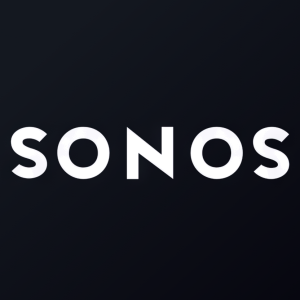Sonos Announces Long-term Sustainability Commitment
Introduces Sonos Climate Action Plan, commits to being carbon neutral by 2030 and achieving net zero by 2040.
Launches Product Sustainability Program to drive down the environmental impact of its products.
“With our Climate Action Plan, we’re entering a new phase in our commitment to environmental responsibility, stepping up our efforts across the board to reduce our impact,” said
Complementing a clear and measurable climate plan, Sonos also introduced a new approach to product sustainability, with an immediate goal of improving energy efficiency, given that more than three quarters of Sonos’ carbon emissions can be attributed to the energy consumed during each product’s lifecycle.
Taking Action on the Climate Crisis
Sonos partnered with VitalMetrics to map the carbon footprint of the company's value chain - from sourcing materials and packaging, to product use and end-of-life. Based on this environmental baseline report, Sonos developed a Climate Action Plan to guide reduction of greenhouse gas emissions across the company’s areas of greatest impact - products, supply chain and distribution - as well as direct operations.
“To make the changes necessary to protect our environment in the coming decades, all corporations must first understand the full impact they have on the environment. This is challenging, expansive work, and we are pleased to see Sonos stepping up,” said
With a primary focus on product and operational carbon reductions, supported by high-quality, verified offsets, Sonos is committed to meeting its goals through natural strategies including habitat regeneration and conservation. For the year ahead, Sonos has partnered with SeaTrees by Sustainable Surf to help offset Sonos’ direct emissions with a marine ecosystem project in the Southern Cardamom Watershed in
"We’re stoked to have Sonos help us restore blue carbon ecosystems around the world, and reverse climate change, while creating positive sustainable development benefits for local communities,” said
The Climate Action Plan also has Sonos collaborating with organizations using sound to improve the environment and funding cutting-edge bioacoustic research. The company has also joined Music Declares Emergency to support the wider music industry in reducing its environmental impact.
“We are committed to a sustainable future for Sonos and for our planet, and we’re beginning that journey with ambitious targets,” said
Transforming Product Design and Performance
Sonos has long believed a premium listening experience can be consistent with environmental consciousness. In addition to its Climate Action Plan, Sonos today introduced its Product Sustainability Program designed to drive down the carbon footprint and overall environmental impact of its products.
The company unveiled short- and long-term targets across energy efficiency, materials, product longevity and packaging, and this year, will conduct its first product environmental life cycle assessment.
- Energy Efficiency: Product energy use is the most significant contributor to Sonos’ carbon footprint. The company is committed to improving the energy efficiency of its product portfolio, with a focus on idle and sleep states. Sonos introduced sleep mode with Roam – helping make it Sonos’ most energy efficient speaker – and by FY23, all new Sonos products will include sleep mode. The company aspires to reduce idle power consumption to less than 2 watts for its entire portfolio, starting with all portable products in FY22.
- Product Longevity: Sonos strives to keep its products in use for a long time and continues to support every speaker it has released. In FY21, the company began a new Design for Disassembly process, which will be incorporated into all new speakers and components, starting in FY23. This approach builds in features – such as fasteners instead of adhesives – that make it easier to repair, refurbish and recycle.
-
Materials: Electronic waste (e-waste) is one of the fastest-growing waste streams in the world. Sonos is working towards a circular future where its products can be recycled to make new Sonos products. By the end of FY23,
100% of new Sonos products will begin using post-consumer recycled plastic in place of virgin plastics, and will also be100% halogen-free. -
Packaging: A comprehensive approach to product circularity must include packaging. And to Sonos, premium packaging also means responsible packaging. This year, Sonos undertook a major packaging design update using FSC (
Forest Stewardship Council ) certified, proprietary Sonos Custom Kraft paper. This paper was first used for Roam, and will continue to be used for new products launching between FY22 and FY25. By FY25, Sonos packaging will be made with100% responsibly sourced paper, including paper that is either PCR (post-consumer recycled), FSC-certified or made from plant-based fibers as we aim to eliminate plastics from our packaging entirely. The company continues to reduce the use of plastics from its packaging, using PCR plastics where necessary.
Transforming Supply Chain & Distribution
As part of its sustainability commitment, Sonos also announced it is joining the
“We look forward to having Sonos support our vision of companies driving sustainable value for workers, the environment and business throughout the global supply chain,” said
Sonos will spend the next year formalizing its environmental goals and refining the company’s approach to the supply chain and distribution focus areas of its Climate Action Plan. This includes working with major suppliers to improve their respective climate footprints, and exploring the localization of repairs and refurbishment where possible.
About Sonos
View source version on businesswire.com: https://www.businesswire.com/news/home/20211208005183/en/
Media Contact
PR@sonos.com
Source: Sonos







